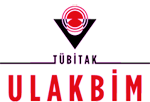The Role of Endosonography in Patients With Moderate and High Probability of CholedocholithiasisRasim Eren Cankurtaran1, Zahide Şimşek2, Yusuf Coşkun21Department of Gastroenterology, Yıldırım Beyazıt University Faculty of Medicine, Ankara, Turkey.
2Department of Gastroenterology, Health Sciences University Diskapi Training and Research Hospital, Ankara, Türkiye
Aim: In this study, we aimed to investigate the diagnostic efficiency and place of EUS in clinical practice in patients with moderate to a high probability of choledocholithiasis according to their ASGE score.
Material and Method: This study includes patients with moderate to high risk of CBDSs who were admitted to the Department of Gastroenterology between August 2015-August 2016. The results of patients undergoing EUS and ERCP for suspected choledocholithiasis were retrospectively reviewed from the hospital registry.
Results: Two hundred and twenty nine patients were included in the present study and 56.3% of the patients (n=129) were female, and the average age of the patients was 62.8±18.3 (2091). The sensitivity of EUS was found to be 89.2%. The specificity was 94.6%, the positive predictive value was 95.6%, and the negative predictive value was 86.9%. In addition, the choledochal diameter measured in AUS and EUS was found to have diagnostic values in predicting the CBDSs [AUC (95% GA p); respectively, 0.617 (0.4090.825) p=0.310 and 0.765 (0.6190.915) 0.020].
Conclusion: Endosonography is both a high-diagnostic and a low-invasive diagnostic method, so it is increasingly used in patients with suspected CBDSs. Referral of suspected patients with CBDSs to a center with EUS and an experienced endoscopist will ensure that the patient receives the correct diagnosis and is not subjected to unnecessary invasive procedures. Keywords: EUS, ERCP, choledocholitiasis
Orta ve Yüksek Olasılıklı Koledokolitiazis Hastalarında Endosonografinin RolüRasim Eren Cankurtaran1, Zahide Şimşek2, Yusuf Coşkun21Ankara Yıldırım Beyazıt Üniversitesi Tıp Fakültesi, Gastroenteroloji Bilim Dalı, Ankara, Türkiye
2Sağlık Bilimleri Üniversitesi Dışkapı Eğitim Ve Araştırma Hastanesi, Ankara, Türkiye
Amaç: Bu çalışmada ASGE skoruna göre orta-yüksek olasılıklı koledokolitiazis hastalarında EUSnin tanısal etkinliğini ve klinik pratikteki yerini araştırmayı amaçladık.
Materyal ve Metot: Bu çalışma Ağustos 2015-Ağustos 2016 tarihleri arasında Gastroenteroloji klinğine başvuran orta ve yüksek olasılıklı koledokolitiazis hastalarını içermektedir. Koledokolitiazis şüphesiyle EUS ve/veya ERCP yapılan hastaların sonuçları hastane kayıtlarından retrospektif olarak tarandı.
Bulgular: Çalışmaya 229 hasta dâhil edildi ve bunların %56,3 (n=129)ü kadın ve hastaların yaş ortalaması 62,8±18,3 (2091) idi. Endosonographynin duyarlılığı % 89,2, özgüllüğü %94,6, pozitif prediktif değeri %95,6, negative prediktif değeri % 86,9 olarak bulundu. Abdominal ultrasonography ve EUSde ölçülen koledok çapının CBDSsleri öngörmede tanısal değerlere sahip olduğu bulundu [AUC (% 95 GA p); sırasıyla, 0,617 (0,4090,825) p=0,310 ve 0,765 (0,6190,915) 0,020].
Sonuç: Endosonography hem yüksek tanısal hem de düşük invaziv bir prosedür tanı yöntemi olduğundan CBDSs şüphesi olan hastalarda giderek daha fazla kullanılmaktadır. Common bile duct stone şüphesi olan hastaların EUS ve deneyimli bir endoscopist olan bir merkeze yönlendirilmesi hastanın doğru tanı almasını ve gereksiz invaziv müdahalelere maruz kalmamasını sağlayacaktır. Anahtar Kelimeler: EUS, ERCP, koledokolitiazis
Rasim Eren Cankurtaran, Zahide Şimşek, Yusuf Coşkun. The Role of Endosonography in Patients With Moderate and High Probability of Choledocholithiasis. Kafkas J Med Sci. 2022; 12(3): 227-232
Corresponding Author: Rasim Eren Cankurtaran, Türkiye |
|









 Full Text PDF
Full Text PDF Print
Print Download citation
Download citation Share with email
Share with email Share
Share Send email to author
Send email to author Similar articles
Similar articles PubMed
PubMed